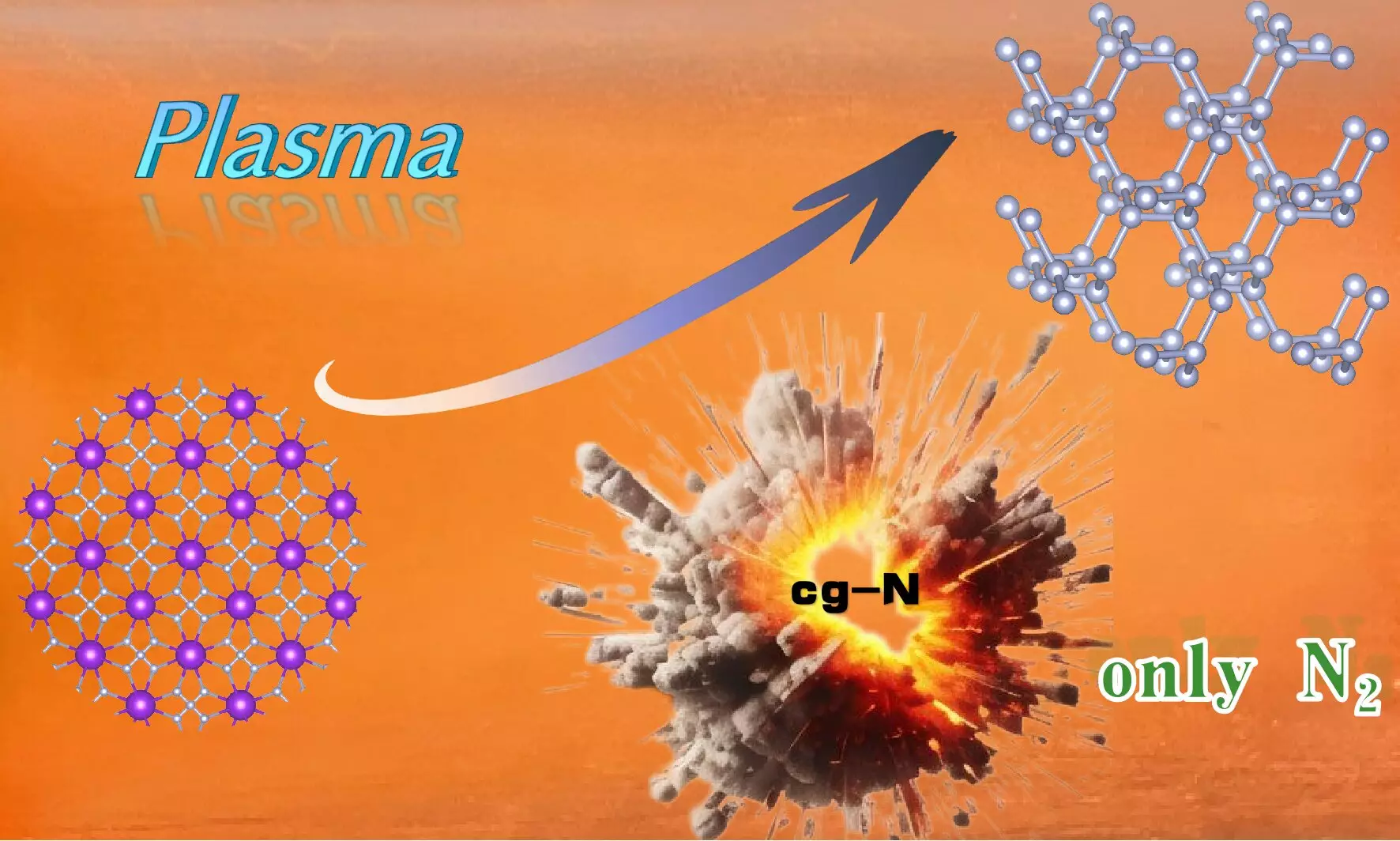A team of researchers led by Professor Wang Xianlong at the Hefei Institutes of Physical Science, affiliated with the Chinese Academy of Sciences, has achieved a significant breakthrough in material science. This team has successfully synthesized cubic gauche nitrogen (cg-N), a high-energy-density material, through a novel application of plasma-enhanced chemical vapor deposition (PECVD) at atmospheric pressure. Their findings, published in the esteemed journal *Science Advances*, herald a new era in the synthesis of energetic materials.
Cg-N is particularly noteworthy as it is composed solely of nitrogen atoms linked by single N-N bonds, sharing structural similarities with diamond. This unique configuration grants cg-N exceptional energy density, making it a prime candidate for various applications in energy storage and propulsion systems. One of the most compelling characteristics of cg-N is its decomposition byproducts; upon breakdown, it produces only nitrogen gas, thus ensuring an environmentally friendly profile in a field often associated with hazardous byproducts.
The environmental implications of synthesizing materials that are efficient and produce benign byproducts cannot be overstated, especially as the scientific community pushes towards greener alternatives in chemical production.
Focus on Atmospheric Pressure Synthesis
One of the most critical advancements in this research is the method of synthesizing cg-N at atmospheric pressure. Historically, synthesizing high-energy-density materials under controlled high-pressure conditions has raised numerous safety concerns, and the need for scalable processes has been a significant challenge. Since 2020, Professor Wang’s group has leveraged first-principles calculations to explore the stability of cg-N and optimize its synthesis conditions. Their research revealed that low-pressure conditions typically led to the breakdown of cg-N due to surface instability.
By studying how different environmental factors affect the stability of cg-N, the researchers devised a method to stabilize this material up to 750 K by saturating surface suspension bonds and transferring charge, thus overcoming a major barrier to practical applications.
The selection of potassium azide (KN3) as the precursor for cg-N synthesis marks another pivotal aspect of this research. KN3 is chosen not only due to its efficiency in electron transfer but also its lower toxicity compared to other chemical precursors commonly used in synthetic processes. This decision reflects a growing trend in material science to prioritize both performance and safety, demonstrating the team’s commitment to environmentally responsible practices.
The successful implementation of PECVD without the restraining effects associated with carbon nanotubes introduces an innovative pathway to producing high-energy-density materials that could one day find applications in a wide range of industries.
Future Implications and Research Directions
With the promising results from this study, the researchers are optimistic about the potential for further exploration into high-energy-density materials. The stability of cg-N at elevated temperatures opens avenues for practical applications where energy output is critical, such as in rocket fuels and advanced energetic materials.
The work done by Professor Wang and his team does not merely contribute to the academic body of knowledge; it also lays the groundwork for future advancements in energy materials that are safe, efficient, and environmentally friendly. As researchers continue to refine these methods, we can anticipate significant developments that will address both scientific and practical challenges in material synthesis.


Leave a Reply